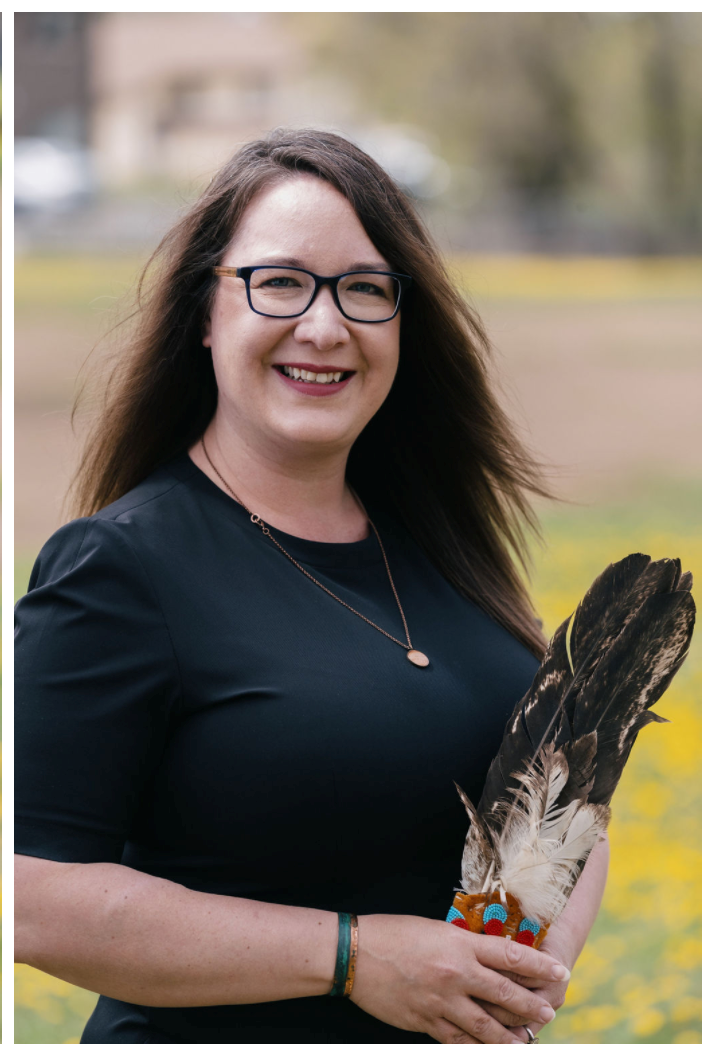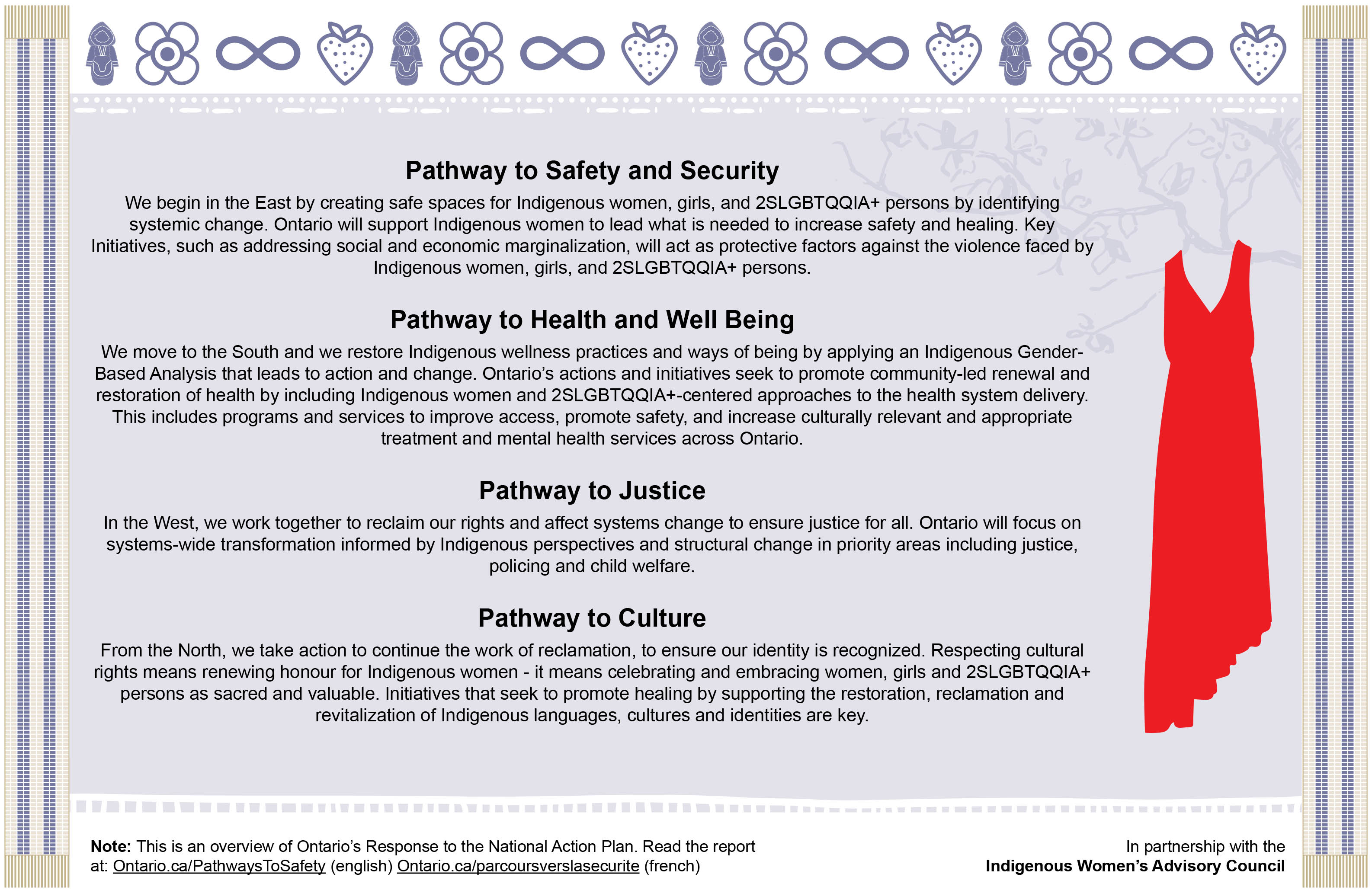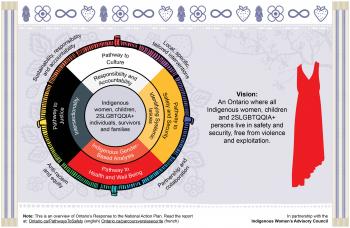Image Caption
Summary
Local Journalism Initiative Reporter
Windspeaker.com

Cora McGuire-Cyrette hopes the next “heavy lifting” that will be done to protect Indigenous women and girls will be shared by all Canadians.
McGuire-Cyrette is optimistic that the Ontario government’s response to the National Inquiry on Missing and Murdered Indigenous Women and Girls, released last week, will provide that framework for that heavy lifting to be spread around.
“If we're looking at who's been carrying this work for generations upon generations it’s Indigenous women dating all the way back to Sisters in Spirit vigils to doing outcry from the grassroots movements.... You're really looking at 10 to 15 to 20 years of advocating for this work,” said McGuire-Cyrette, the executive director with Ontario Native Women’s Association.
“Now we need to see leadership all across Canada. We need to see Canadian citizens. We need to see everybody has a role to play in order to ensure Indigenous women’s safety.”
What makes McGuire-Cyrette even more optimistic is that Pathways to Safety: Ontario’s Strategy in Response to the Final Report into Missing and Murdered Indigenous Women and Girls is a collaboration between the province and the Indigenous Women’s Advisory Council, which she co-chaired.
That it took two years from when the national inquiry delivered its final report to the province developing a plan is an “unacceptable amount of time” for McGuire-Cyrette as she knows that represents two more years of lack of safety for Indigenous women and girls.
However, she also knows that two years has resulted in a plan that has fully heard the voices of Indigenous women and communities.
“We were able to do engagements with communities, with Indigenous women, with everyone affected by the issue and that took some time. Then we were able to analyze what were those key factors that needed to be in their plan. As the Indigenous Women's Advisory Council we were able to provide those recommendations and the government listened to the recommendations. That for us was definitely a strength-based way to do the work,” she said.
Too often, she pointed out, the government provides only lip service when it consults with Indigenous communities. But not this time.
Pathways to Safety outlines six key areas where action is needed: safety and security; culture; health; justice; collaborative responsibility and accountability; and identifying and addressing anti-Indigenous racism and Indigenous gender-based analysis.
There are 118 initiatives and they address all 231 Calls for Justice from the national inquiry’s final report. Actions will involve 10 government ministries.
“Ontario’s strategy focuses on transformation, resourcing and structural change with an explicit violence prevention lens. These priorities…will address the negative impacts of deeply held anti-Indigenous attitudes and their wide-ranging effects on the health and well-being of Indigenous women, girls and 2SLGBTQQIA+ people and their communities,” reads Pathways to Safety.
This framework is only the beginning, says McGuire-Cyrette. Now it’s about getting what’s on the paper to make the difference on the ground and that will involve meetings with communities and leadership to determine community-specific priorities.
“The heavy lifting needs to begin now where you start to look at those accountability pieces. You start to look at how do you measure and track, and not just from your traditional forms of measurement, but ensuring that Indigenous women are included as part of that process, part of that accountability process,” she said.
McGuire-Cyrette stresses that now that the framework is in the place, action on the ground has to happen quickly and “we need to accelerate the change.”
The province says it will require $1.6 billion to address all six pathways.
More will be required, says McGuire-Cyrette.
“It's the beginning. When you're unpacking such massive issues like we are, you need to have long-term commitments and planning,” she said
She also stresses the need for accountability with the funding, ensuring that the right programs and services are developed to address the needs.
McGuire-Cyrette says it’s important that a community approach and not an individual approach be taken. She says that is the only way Canadians will not be able to dismiss the deaths of Joyce Echaquan in the healthcare system or Tina Fontaine in the child welfare system as unusual occurrences.
“I really don't know what it's going to take for everyone to really see these issues and we really do hope that people are able to connect the dots and see that colonization exists in Canada still today.
“All these attacks on us from taking our children away from us to discriminating against Indigenous women to making violence against Indigenous women normalized to the silencing of Indigenous women to today … That's what people need to see and believe and to realize that that's the truth here in Canada. As beautiful a country that we all live in there's these hidden secrets and they're coming out of the closet and it's time for change,” said McGuire-Cyrette.
“In times of crisis there's an opportunity for leadership and if this is not some of the biggest crisis that we've been facing as a nation … I don't really know what is. I always dreamed … what a beautiful world it would be if we all came out of the pandemic safer, not just safer from a virus but safer physically to live our lives, to be able to be mothers, to be leaders, just to be Indigenous.”

Local Journalism Initiative Reporters are supported by a financial contribution made by the Government of Canada.

